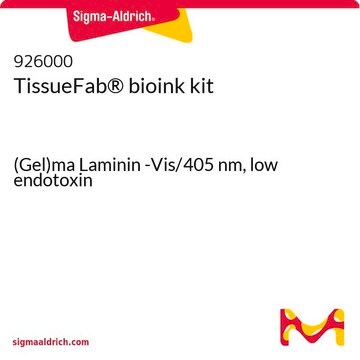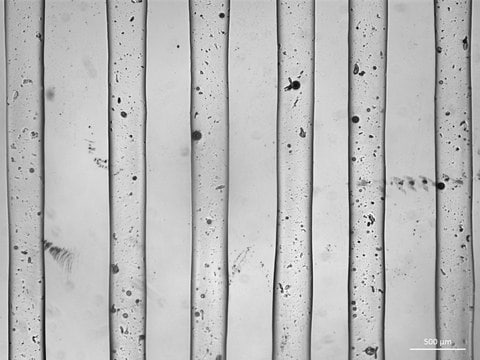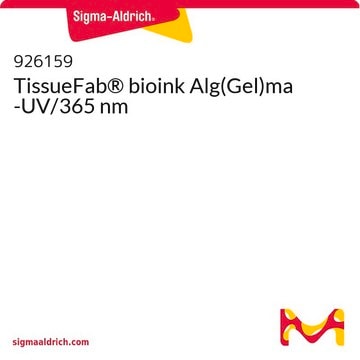919632
TissueFab® bioink
(GelHA)ma -UV/365 nm
Synonyme(s) :
Bioink, HAMA, Hyaluronic acid, Hyaluronic acid methacrylamide, Hyaluronic acid methacrylate, Hyaluronic acid methacryloyl, Sodium hyaluronate
About This Item
Produits recommandés
Niveau de qualité
Description
suitable for 3D bioprinting applications
Stérilité
sterile-filtered
Forme
viscous liquid
Impuretés
≤5 CFU/g Bioburden (Fungal)
≤5 CFU/g Bioburden (Total Aerobic)
Couleur
colorless to pale yellow
Taille des particules
0.2 μm
pH
6.5-7.5
Application(s)
3D bioprinting
Température de stockage
2-8°C
Vous recherchez des produits similaires ? Visite Guide de comparaison des produits
Catégories apparentées
Application
Conditionnement
Informations légales
Code de la classe de stockage
10 - Combustible liquids
Classe de danger pour l'eau (WGK)
WGK 3
Certificats d'analyse (COA)
Recherchez un Certificats d'analyse (COA) en saisissant le numéro de lot du produit. Les numéros de lot figurent sur l'étiquette du produit après les mots "Lot" ou "Batch".
Déjà en possession de ce produit ?
Retrouvez la documentation relative aux produits que vous avez récemment achetés dans la Bibliothèque de documents.
Articles
Bioinks enable 3D bioprinting of tissue constructs for drug screening and transplantation; select suitable bioinks for specific tissue engineering.
Learn how 3D bioprinting is revolutionizing drug discovery with highly-controllable cell co-culture, printable biomaterials, and its potential to simulate tissues and organs. This review paper also compares 3D bioprinting to other advanced biomimetic techniques such as organoids and organ chips.
Notre équipe de scientifiques dispose d'une expérience dans tous les secteurs de la recherche, notamment en sciences de la vie, science des matériaux, synthèse chimique, chromatographie, analyse et dans de nombreux autres domaines..
Contacter notre Service technique
